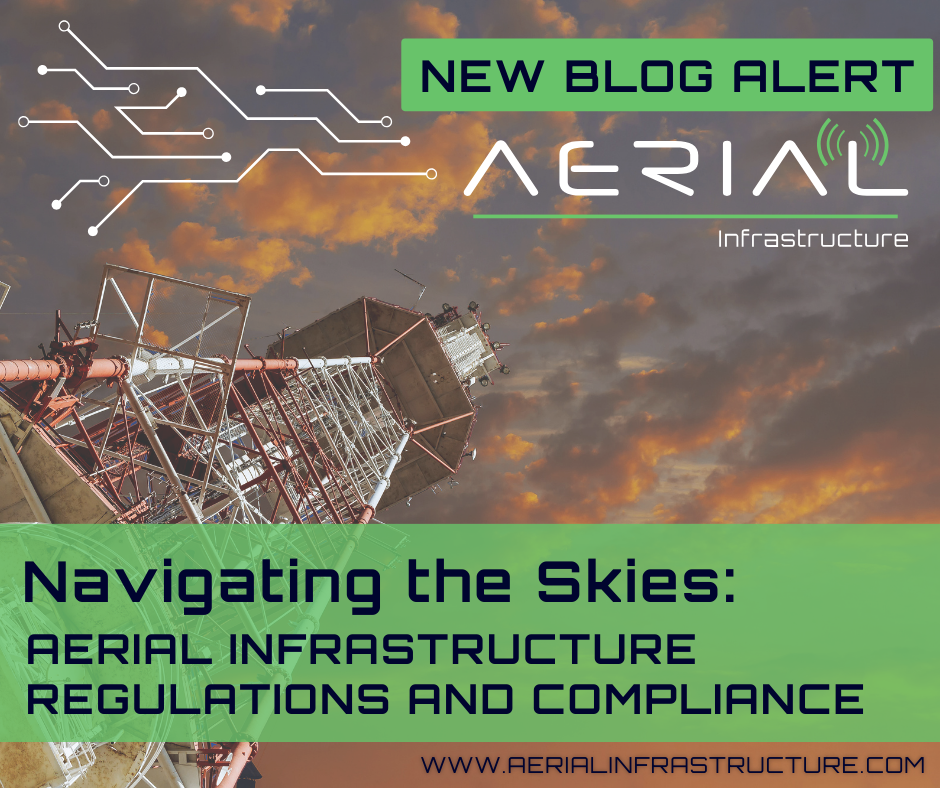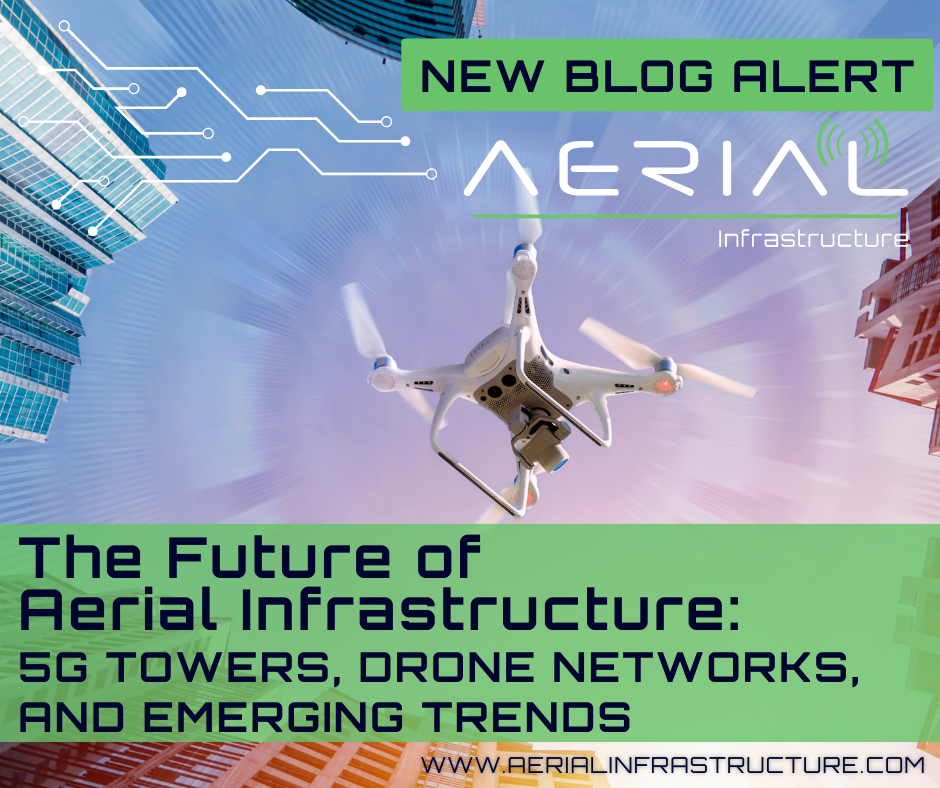
The Future of Aerial Infrastructure: 5G Towers, Drone Networks, and Emerging Trends
In the world of aerial infrastructure, where towering communication structures and power lines connect us all, regulations and compliance play a pivotal role in ensuring safety, reliability, and environmental responsibility. Understanding the regulatory framework governing aerial infrastructure is not just essential; it’s paramount. In this blog, we’ll delve into the world of aerial infrastructure regulations and explore their impact on the industry.
The Regulatory Framework: A Complex Web
Aerial infrastructure, which includes cell towers, power transmission lines, and other critical installations, is subject to a multifaceted regulatory framework. These regulations are put in place by governmental bodies at various levels, including federal, state, and local authorities.
Here are some key aspects of this intricate regulatory landscape:
Federal Regulations
At the federal level in the United States, several agencies are responsible for regulating aspects of aerial infrastructure. The Federal Communications Commission (FCC) oversees the licensing and operation of communication towers and related equipment. Additionally, the Federal Aviation Administration (FAA) governs airspace usage, ensuring the safe coexistence of aerial infrastructure and aviation.
State Regulations
State-level regulations often address specific concerns related to aerial infrastructure. These may include requirements for safety inspections, environmental impact assessments, and zoning regulations. States have the authority to enforce their own rules, which must comply with federal regulations.
Local Regulations
Local governments have a significant say in the placement and construction of aerial infrastructure within their jurisdictions. Zoning laws, land use regulations, and permitting processes are commonly under local control. These regulations help manage the aesthetic and environmental impact of structures within communities.
Impact on the Industry
The regulatory framework for aerial infrastructure has a profound impact on the industry in several
ways:
Safety and Reliability
Regulations are designed to ensure the safety and reliability of aerial infrastructure. Compliance with safety standards, such as structural integrity and electromagnetic radiation limits, is essential to prevent accidents and service disruptions.
Environmental Considerations
Environmental impact assessments are often required before the construction of new infrastructure. Regulations compel companies to assess and mitigate potential ecological consequences, such as habitat disruption or visual impact.
Consistency and Uniformity
A harmonized regulatory framework ensures consistency in the industry. Companies must adhere to a set of standards that promote uniformity in tower construction, maintenance, and operation, reducing the risk of inconsistencies and errors.
Local Community Engagement
Local regulations encourage engagement with the communities where infrastructure is deployed. Companies must navigate public hearings, gather input, and address concerns to secure necessary
permits and approvals.
Cost and Efficiency
Compliance with regulations can entail significant costs, including permit fees, environmental studies, and safety measures. Balancing these costs while maintaining efficient operations is a constant challenge for the industry.
The Ongoing Evolution
The regulatory landscape for aerial infrastructure is continually evolving. As technology advances and concerns about safety, security, and environmental impact grow, regulations adapt to address these changes. Staying informed and engaged with regulatory updates is a fundamental aspect of the industry’s operations.
In conclusion, aerial infrastructure regulations and compliance are crucial components of the industry’s operation. They ensure the safety of structures, protect the environment, and foster responsible development. As the industry continues to expand and evolve, regulatory frameworks will play an increasingly essential role in shaping its future. Navigating the skies is not just about towers and lines; it’s about adhering to the rules that keep our world connected and safe.




